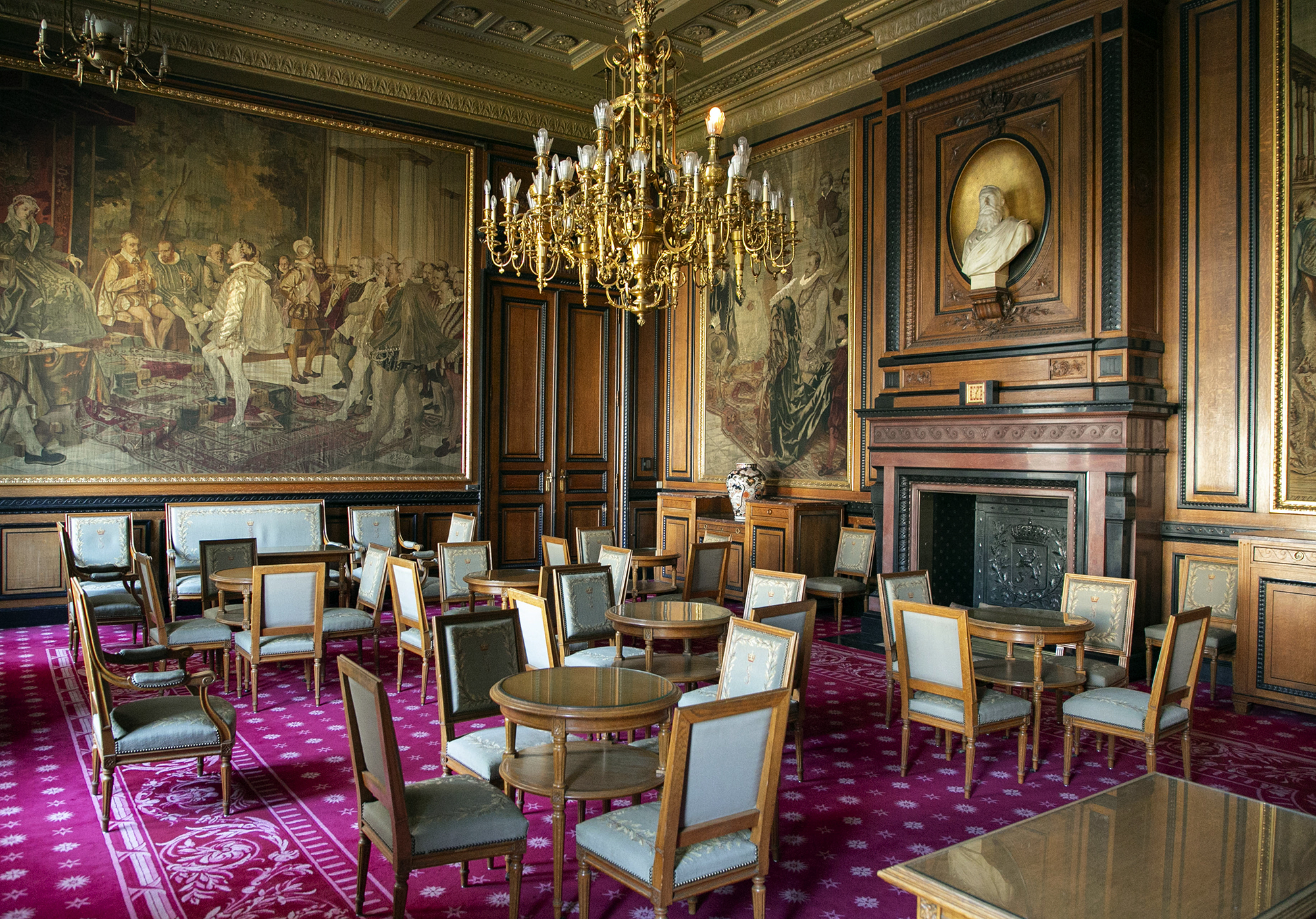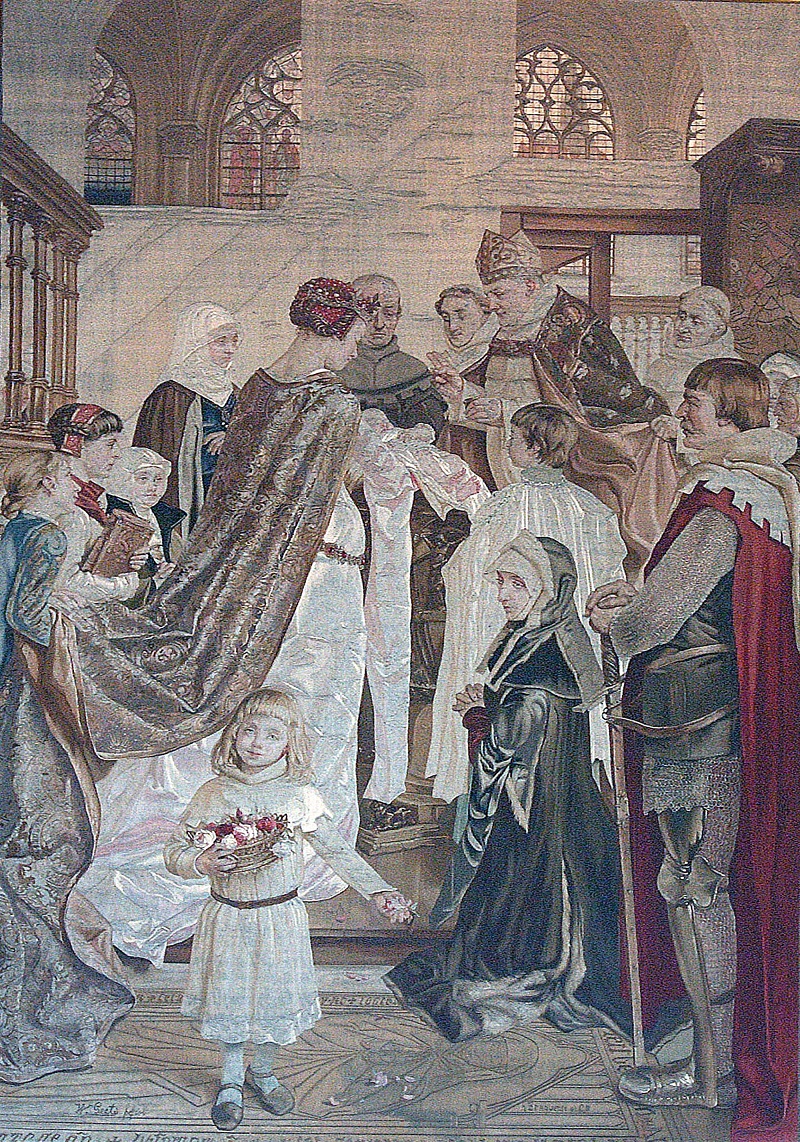
This baptism scene is taking place in St. John's Church in Ghent (now Saint Bavo Cathedral).
Philip, son of Jacob Van Artevelde (1290-1345), lies in the arms of his godmother, Philippine of Hainaut, who was also Queen of England. This godparenthood is a sign of gratitude for his father Jacob, who, as a popular leader in the then very rich and powerful Ghent, sided with the English during the Hundred Years’ War between France and England, while Ghent administratively belonged to the French King.
In making that choice, he safeguarded the prosperity of Ghent: its cloth weaving depended on the importation of high-quality wool from England.
 This tapestry presented by guide Cindy
This tapestry presented by guide Cindy
This tapestry presented by guide Cindy
[ Staff members talk about their favourite spot or work in the Senate ]
In this video, Cindy, our guide, introduces us to her favourite room in the Senate, the former smoking room. Our gaze is drawn to its magnificent tapestries, all made by hand in the 19th century.
Let's pause a moment to look at the tapestry depicting a baptism, that of Philippe van Artevelde, son of Jacques van Artevelde, at St John's church in Ghent in 1340.
This tapestry is remarkable for its huge historical value, but also for a surprising distinctive feature. From wherever you’re looking at it, you have the feeling that the little girl with flowers is following you with her eyes, a bit like the Mona Lisa, whose magnificent eyes seem riveted on you.
© Belgian Senate

